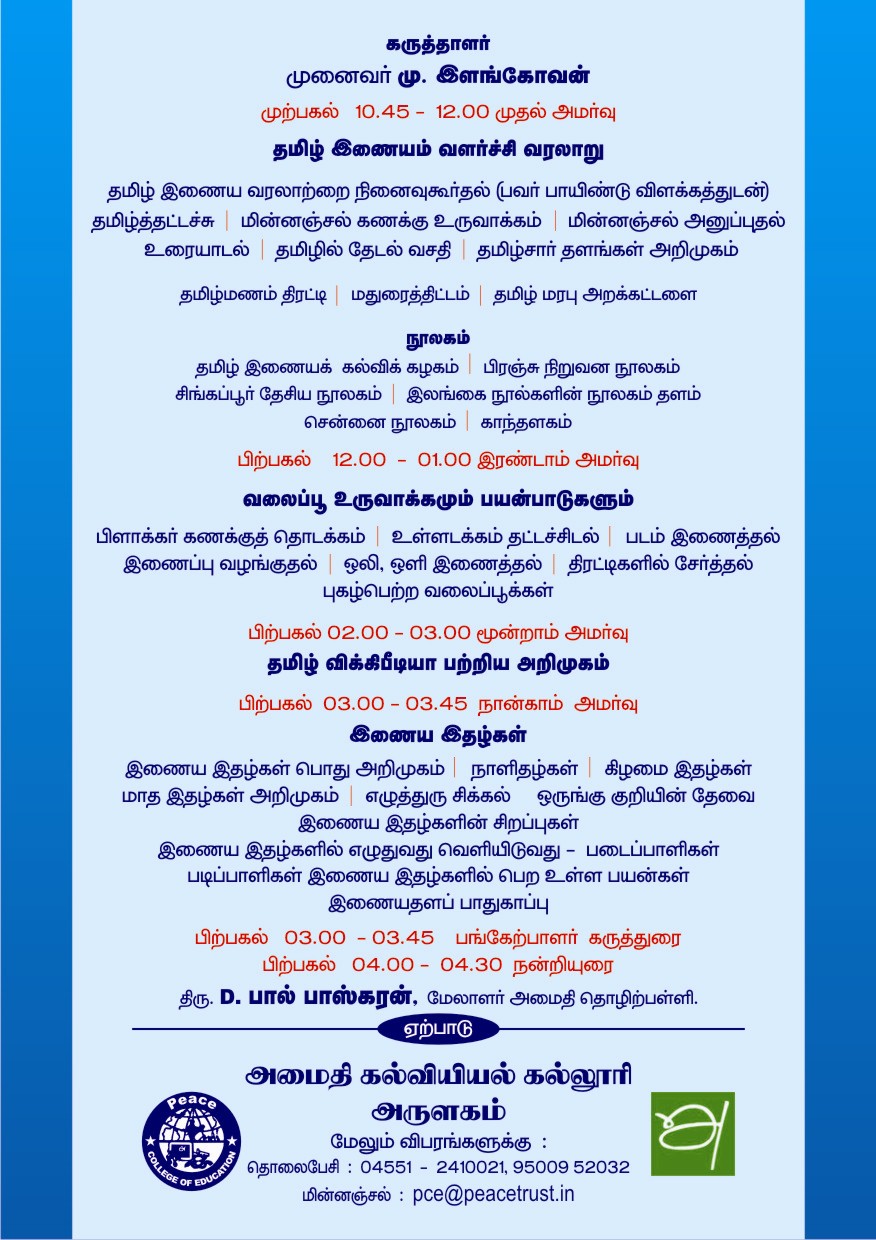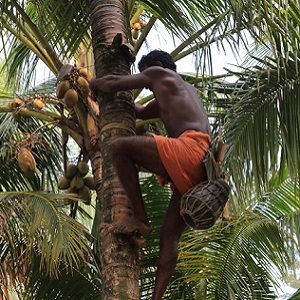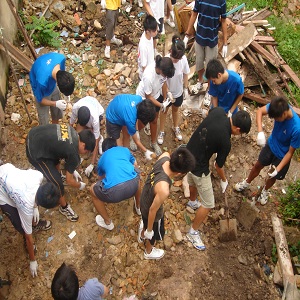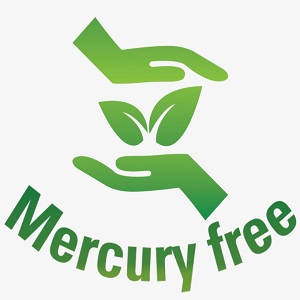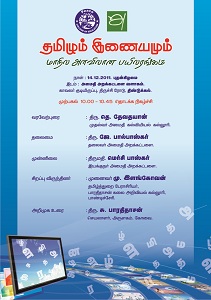Benefits of Palm Tree
Benefits of Palm Tree published in THE HINDU tamil version.....
Source : THE HINDU (Tamil)
Web-Link : http://tamil.thehindu.com/opinion/reporter-page/ககலாேமா- கபக-த/article5340630.ece
To open PDF directly, click here.
Sustainable Livelihood of Palm workers and their families by Value adding to Palm Juice
Introduction
ARULAGAM proposed to initiate “Value addition to Palm Juice ( Neera) to sustain the livelihood of Palm workers and their families, with the aim of preserving, bottling and marketing the Palm juice using cost effective appropriate methods and technologies. This project was supported by National Research and Development Corporation (NRDC) with 1,00,000/ to undertake and implement the proposed plan with the active involvement of palm workers. The uncertain income from palm juice extracted from the trees, which should be processed and sold out within 4 hours because of that the palm juice will get fermented. In order to overcome the problems, preserving the palm juice using appropriate processing methods to keep the juice (Neera) for longer time in ensuring sustainable livelihood options of the families involved palm juice extraction work. ARULAGAM has adapted the following strategic approaches to make success of the project to be replicated and sustained for long term:
1. Selection of area for implementation
In and around Koviloor village in Dindigul district, where palm extraction works have been traditionally practiced by the palm workers, with whom ARULAGAM had established rapport and relationships with 40 palm extraction workers and made transparency on the project implementation for the future sustainability. The palm workers and women had rendered their cooperation and involvement in the proposed activities. During the season (Usually January to June), every day 100 litres of Neera were collected from the palm juice extraction workers for processing and marketing, as the preliminary initiative.
Initiatives launched by ARULAGAM to make the process into successful one with the following activities:
- Identification of beneficiaries
- Rapport building and project orientation meeting with different stakeholders
- Purchase of materials and instruments
- Installation of instrument and work site preparation
- Pilot phase activity with few beneficiary Selection of beneficiaries
- Organize training for product preparation
- Organize training for managing the activity
- Assess market options
- Market linkages & Cost benefit analysis
- Rapport with various outlets
- Actual selling of NEERA and Follow up action
2. Preserving the Palm Juice
- The white palm sap, at initial stages (when collected) does not ferment (non-alcoholic) and tastes very sweet.
- As the time passes the sap get fermented, intoxicates and tastes sour.
- The fermented liquid is known as 'Palm Wine' or Kallu (Tamil).
- As the palm sap gets fermented very quickly, they apply lime on the surface of the pot as a preservative.
- The lime prevents quick fermentation.
After extraction of palm juice from the trees ,usually early in the morning, are collected from the individual palm workers and preservation measures had been adapted with the technical support and guidance rendered by Prof Dr. David Ravindran (Gandhigram rural University) and Mrs. Anbu Vakini( Nutrient Specialist ), to enhance the production and without changing the tastes and quality of the juice while marketing.
ARULAGAM has established one processing unit at the field where the proposed initiatives have to b launched in order to make easy accessibility to procure the extracted palm juice immediately after extraction and to process the juice in the field itself.
Steps involved in processing and preserving the extracted palm juice
All the men and women of the Palm families involved in preserving of palm juice preservation using simple methods which are cost effective, with these methods, rate of decomposition of palm juice is minimized or arrested and enable the juice to keep for more than 2 to 40 days. The variances in retaining taste of preserved juice are affected by many factors such as tastes varies with pH of juice , trees, time of collection, location of trees, climatic conditions, applying lime etc. these are the factors we faced as problems. So we encountered the problems of storing the packed juice in days which varies from 2 -40 days. So ARULAGAM team decides to market the products to understand their preference over the tastes and quality.
3. Packing and Marketing of Palm Juice
In this way, the preserved Palm juice is marketed in the form of sealed bottles. On considering the costs of making tetra pack, ARULAGAM considers the bottles for re-use of the same in the coming months with frequency.
ARULAGAM marketed the bottled Palm juices in Dindigul and Karur with the support and encouragements of Khadi showrooms in Karur District and fruit juice shops in Dindigul District. During this period, we faced much hindrance in marketing the juice, as we are not that much expertise in marketing strategies. So, ARUALGAM arranged Palm Juice Introductory Functions both in Karur and Dindigul in which Mr. M.P. Gurusamy, Economist, Mr. Krishnan, Secretary of Palm Worker’s Society, Mr. Pamayan, Environmentalist, Mr. Gopalakrishnan, Politician, noted Doctors and entrepreneurs participated and insisted the need of using palm juice as health drink with many nutrient values, instead of artificially flavoured beverages. This meeting helps to spread the message to reach the people. The programme ends with the documentary film “ Open of Insight” depicts the life of the blind palm worker involved in this work for years.
Lobbying with Government in Expanding marketing sources at state level
Based on our experiences and encouragements in marketing the bottled palm juice in Dindigul and Karur regions, ARULAGAM decides to spread the methods throughout the state, and meet the Tamil Nadu Khadi Department officials at Kuralgam, Chennai where they appreciated the initiatives and render encouraging ideas. We also made an attempt to make powder from the palm juice and get succeeded to some extent with the help of Mr. Siddiq who is the Food processing in charge of the Gandhigram Trust, Dindigul.
At the time, we met Mr.Kumari Anandan, The Chairman of Tamilnadu Palmyrah Development Board, and other officials of Tamil Nadu Palm Products Development Board. He appreciated our initiatives and promised to promote the methods for the welfare and livelihood of palmyrah workers. He assured to recommend the method to the Mr.M. Karunanithi, Chief Minister of Tamil Nadu and discussed about it. With the keen interest, our Chief Minister has recently initiated a project for packaging Neera (Padhaneer) in tetra-pack. The product will be marketed by Aavin, the milk co-operative. It is the success to our lobbying work to make changes in the lives of families involved in Palm juice extraction traditionally.
ARULAGAM is glad to note that on account of sustained effort of Arulagam and its effective lobbying with Palmyrah Development Board, the Government of Tamil Nadu has recently initiated a project for packaging Palm Juice in Tetra-pack and palm related products.
This is a great success story for Arulagam. We have fulfilled the mission of providing self employment for the palm workers of Tamil Nadu.
4. Media coverage
All the programmes on value added palm juice have been spread through various dailies and magazines in Tamilnadu as news and articles (enclosed as annexure) on the use of Bottled Palm juice to reach the people.
5. Future initiatives planned to be implemented by ARULAGAM
ARULAGAM plans to add value to Palm Juice (Neera) with the production of the following products by involving the women of the Palmyra workers to empower and sustain their livelihoods throughout the year.
- Formation of Palm worker family groups in terms of share holding groups, that is every palm extraction family holds a share by supplying the extracted palm juice to the processing unit.
- They families will receive the amount for the juice supplied to the processing unit.
- The family members- women- involve in processing, preservation, packing and marketing the palm juice by exploring marketing outlets and sources with ARULAGAM.
- Profit sharing to the share holding family members ( usually during non-season period)
- Promoting market outlet for the value added products like Gur, Crystal sugar making, Palm candy production, other than palm juice marketing.
- These strategies will enhance the livelihood options and ensured employment opportunities to the women throughout the year, especially during non- palm juice season (July- December)
Gur
When Neera is converted into a solid or semi-solid crystal line mass it is called gur. It has got a wide use as sweetening agent in Indian village food products. Palm gur has a characteristic smell of its own.
Crystal Sugar Making
The initial process of sugar making is practically the same as that of gur. In this case also, juice is de-limed, filtered and boiled. The juice when it reaches 110°C temperature is poured in the crystalliser.
Palm Candy
Like palm gur, palm candy has also its importance among the products of Neera. It is being produced and used since procuring sweet Neera from palmyra has been known. It has got its various uses in Ayurvedic medicinal preparation as well as direct use for thrist,Urine trouble and body heat, small pox, and cough and cold
Plant Growth Promoter
The unused Palm juice can be used as plant growth promoter instead of chemical fertilizer.
6. Planting of Palm Tree Saplings
ARULAGAM is planned to plant 1 million palm seeds along the coast lines not only to promote palm cultivation in considering the sustainable livelihood options for the families involved in palm works, but also creating green belt along the coast lines to prevent the harmful effects of heavy flood waves and Tsunami.
7. Acknowledgement
On behalf of Arulagam sincerely thank to National Research and Development Corporation (NRDC) for their support services to undertake and implement the project into success and the following eminent personalities in promoting and sustaining lives of Palmyrah workers:
- Mr. M. Karunanithi, Honorable Chief Minister of Tamil Nadu
- Mr. Kumari Anandan, Former Member in Parliament and Chairman, Tamil Nadu Palmyra Development Board
- Mr. K. Ramachandran, Honorable Minister for Khadi and officials of Khadi Industries.
- Dr. David Ravindran of Gandhigram Rural University
- Mrs. Anbuvahini, Nutrient specialist.
- Mr. Siddique, Food processing unit, Gandhigram
Submitted to:
National Research and Development Corporation (NRDC)
Service Learning Project at Allimoyar
Date: Dec 9-23, 2010
Venue: Allimoyar Tribal Hamlet, Thengumarahada Village, Nilgiris.
Organisers: Arulagam and Coast-2-Coast, Singapore.
Target group: School Children and Village Youth.
Purpose: To spread environmental awareness, experimental learning and facilitate basic infrastructure.
Medium: Art, Music, Painting, Sports, personal interaction, tree planting, books and printed materials.
Arulagam conducted a 14-day Service Learning project along with Coast-2-Coast, Singapore at Allimoyar Tribal Hamlet, Thenghumarada Village, Nilgiris North Forest Division. The social service activity happened during December 09, 2010 – December 23, 2010 at Allimoyar situated in the banks of river Moyar in Nilgiris North Forest Division. Latitude and longitude for our project site is 11.56565N & 76.97541E and 11.55686N & 76.95135E. 13 Volunteers from Coast2Coast and equal number of volunteers from Arulagam jointly worked in various activities.
The following activities were conducted in the Allimoyar tribal hamlet:
- Painting of mural with environmental theme at Government Tribal Residential Middle School and village.
- Experiential learning and enrichment workshops (e.g. Science experiments)
- Art Demonstration in schools (Origami, an art from recycled materials & waste etc)
- Building of Library shelves and donation of books to the Allimoyar village
- Playground renovation work for youths
- Beautification of school building
Members of Coast-2-Coast organization set-up a library for not only the school, but also for the village. Playground was created as part of the programme and the school classroom walls were cleaned and painted. This resulted in the beautification of school. Not to mention, tree plantation was organized as part of the programme.
Apart from lectures on Indian History and Tribal people, Environment awareness was also provided to the participants with the help of the members of ARULAGAM during their 10-day stay in SWS. The team of XI spent first 10-days at Allimoyar village and the last 4-days were spent at east coast of India near Kanyakumari towards Mangrove plantation.
Please find the article about Mangrove plantation by Coast-2-coast volunteers in THE HINDU. (http://www.thehindu.com/todays-paper/tp-national/tp-tamilnadu/article1031360.ece)
{mosmap width='936'|height='400'|lat='11.554167'|lon='76.950110'|zoom='15'|mapType='Satellite'|text='Allimoyar Village, Nilgiris'|tooltip='DWO'|marker='1'|align='center'}
{rss uri=http://picasaweb.google.com/data/feed/base/user/115351421924720875854/albumid/5802932275688710001?alt=rss&kind=photo&hl=en_US limit=24}
Developing Strategies to Establish Mercury Free Hospitals in Coimbatore
Period: 2010-11
Location: Coimbatore
Organisers: Arulagam, OSAI and District Administration
Target Group: Hospitals of Coimbatore.
Purpose: Building awareness and Developing Strategies to Establish Mercury Free Hospitals in Coimbatore.
Funding / Collaboration: Toxics Link
All societies are faced with the challenge of providing quality healthcare at an affordable value. As the relationship between human health and environmental contamination or degradation has become increasingly clear, societies must now also consider this dimension. As it turns out, one of the most important steps health care providers can take is to minimize their own sector's impact on the environment and therefore on human health itself. Such considerations are increasingly coming into play in the selection of healthcare products, such as temperature or blood pressure measuring devices that contain the global pollutant, Mercury.
In Coimbatore, the health care sector is a key source of global mercury demand and emissions. Mercury is found in many health care devices, including thermometers, blood pressure cuffs, and esophageal dilators. It is present in fluorescent lamps and dental amalgam, as well as many chemicals and measurement devices used in health care laboratories. The health care sector emits mercury waste into the environment when any of these devices are spilled or broken. Health Care generated mercury waste enters the global environment via incineration, solid waste disposal or waste water.
In this regard, TOXIC LINK, a New Delhi-based environment activist group, OSAI, and ARULAGAM worked in collaboration with health care providers, government agencies, and non-governmental organizations to completely eradicate mercury usage at healthcare sectors. To eliminate mercury usage from the health care sector is not difficult if we act on the right way. The chief mercury contamination sources include instruments that contain mercury like Thermometer, Blood pressure cuffs and esophageal dilators. It is also found in Dental amalgam, cleaning agents and fixatives for laboratory work. While starting this project we came to know a bitter fact that many of the stakeholders who have been associated with mercury don't know the ill effects of it. Due to the accuracy those mercury thermometers provide, Doctors prefer it to the digital ones though they were well aware of its ill effects. By the year 2011, We have formed a core committee involving stakeholders, NGOs which is headed by the District collector.
The members are
- District Collector, Coimbatore
- Medical Superintendent, Coimbatore Medical College
- District Engineer, TNPCB
- Joint Director of Medical and Rural Health Services, Coimbatore
- President, IMA, Coimbatore
- Secretary, IMA, Coimbatore
- President, IMA – NHB
- Mr. S. Sudhakar, Teckno Therm Industries
- Dean, GKNM Hospital
- President, Kovai Medical College Hospital
- Mr. Arun Venkatraman, Toxics Link
- Mr. K. Kalidasan, OSAI
- Member from Arulagam
- Mr. Ravindran, RAAC
Activities towards eradication
- We have created awareness about the hazardous nature of mercury in healthcare sector among the stakeholders in Coimbatore city.
- We have been sensitizing the health care personals on the hazards of mercury through information containing pamphlets, audio and video.
- Ten Hospitals were considered as target hospitals and various awareness measures were given to selected representatives from those hospitals. We have taken the process of convincing the hospital management to procure and use mercury-free instruments.
Activities in creating awareness includes
- Providing manual about the facts of mercury to the representatives.
- Brochure containing key points was issued to the representatives.
- Knowledge about the alternative equipment available without mercury was shared and discussed.
- A brain storming session was held to evolve strategies to phase out mercury from health care sectors.
- Slides and videos depicting the effects of Mercury on Human and ways to handle mercury spills were screened and discussed with those participants.
- Success stories of other hospitals which obliged to change to Mercury free were publicised to the hospital management representatives.
Further, we organised meetings with the authorities of the ten leading hospitals. They assured to eliminate the mercury equipment from their hospitals step by step. We hope within a few months, 5 of that hospitals would completely eliminate the mercury equipment. We are continuing our efforts to all other hospitals.
News in Media
Hospitals asked to end use of mercury: pollution control board - The Hindu | Nov 22, 2010
http://www.thehindu.com/news/cities/Coimbatore/article905241.ece
City's private hospitals phasing out mercury use - The Hindu | Feb 14, 2011
http://www.thehindu.com/todays-paper/article1453446.ece
Call to phase out mercury from health sector - Times of India | Nov 22, 2010
http://articles.timesofindia.indiatimes.com/2010-11-22/chennai/28212875_1_health-sector-mercury-healthcare-sector
Coimbatore GH turns mercury-free, first outside Delhi - Times of India | Dec 11, 2010
http://articles.timesofindia.indiatimes.com/2010-12-11/chennai/28244981_1_mercury-20-acre-lake-dental-wing
Tamizhum Inaiyamum
As part of Arulagam's effort to increase the usage of Tamil in Internet, we've joined hands with Peace Teacher Training Institute for a One day workshop on 'Tamilzhum Inaiyamum' at Dindugal on 14th Dec, 2011. The workshop would be conducted by Dr.Mu.Elangovan, Professor, Bharathidasan Arts and Science College, Puthucherry. We would like to promote Tamil Wikipedia, a blog spot for providing natural history information in Tamil. We(care Earth and Arulagam) would also like to share a happy news that www.nammamoyaru.com would be launched soon followed by a website dedicated to vulture. Please visit
All are welcome

